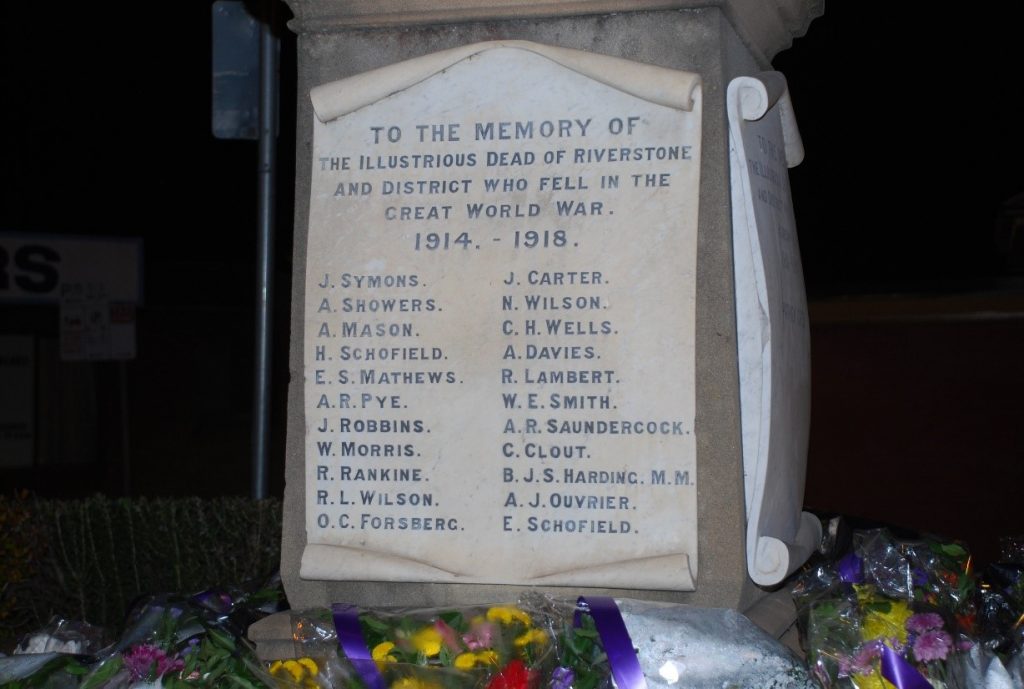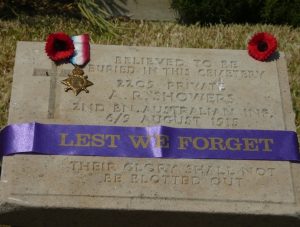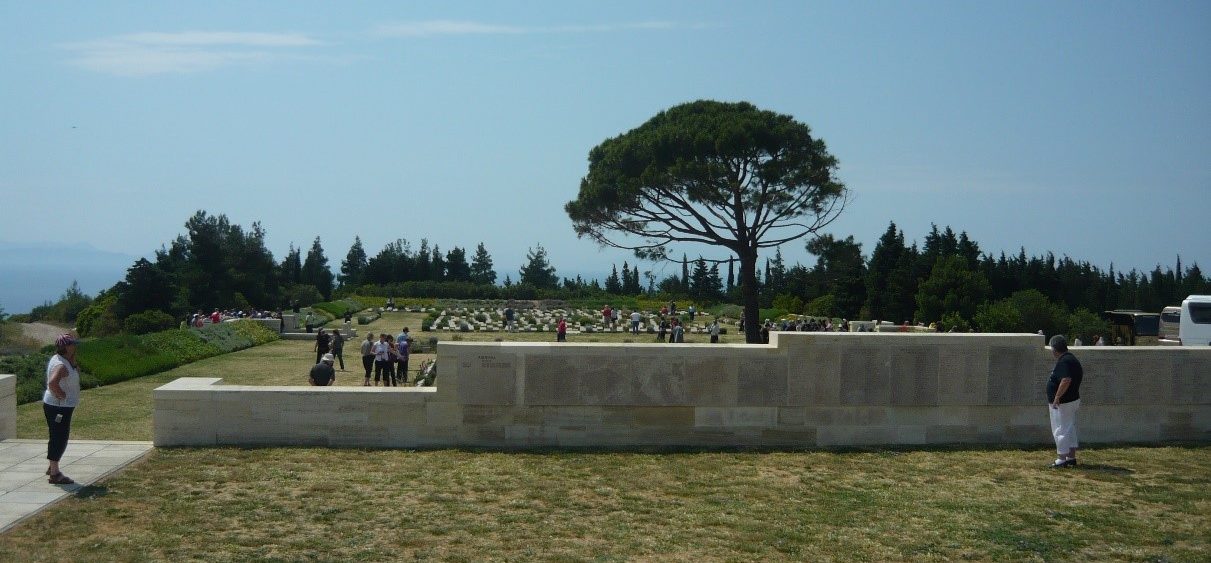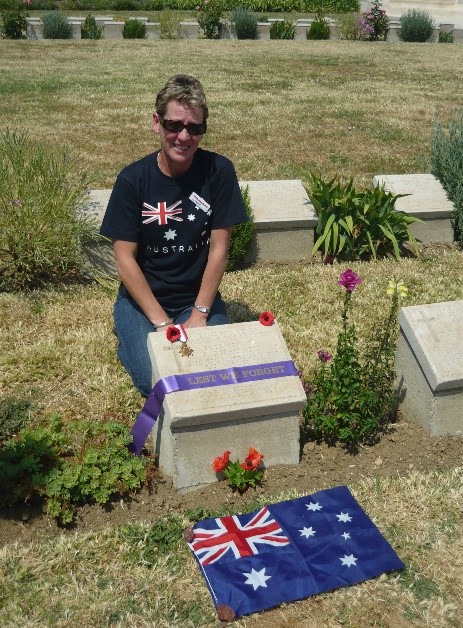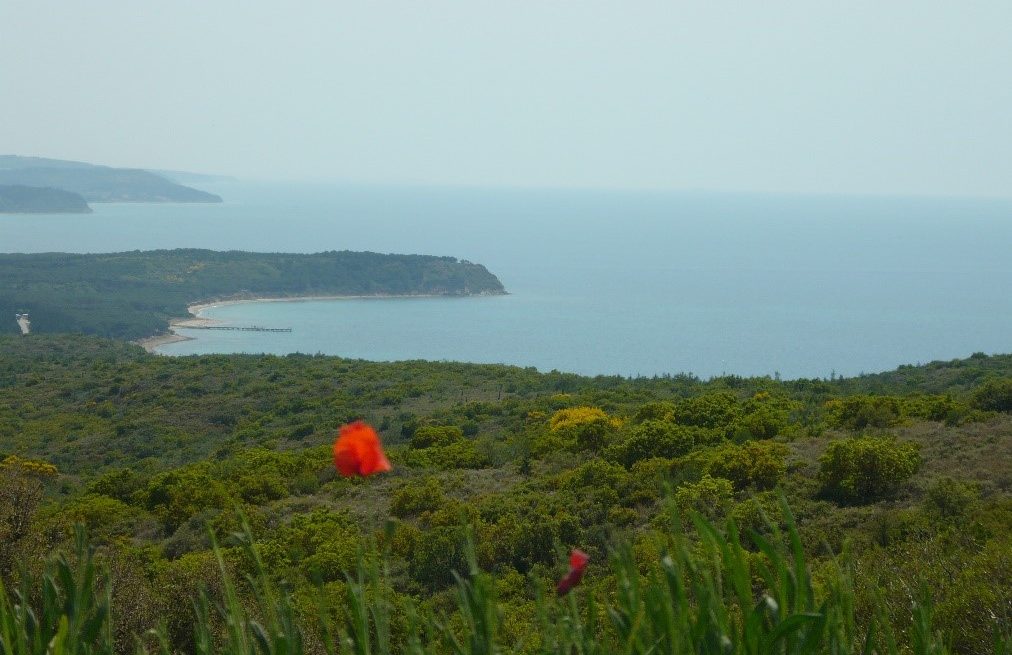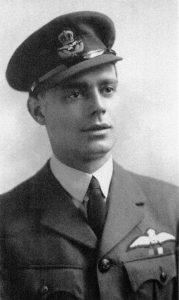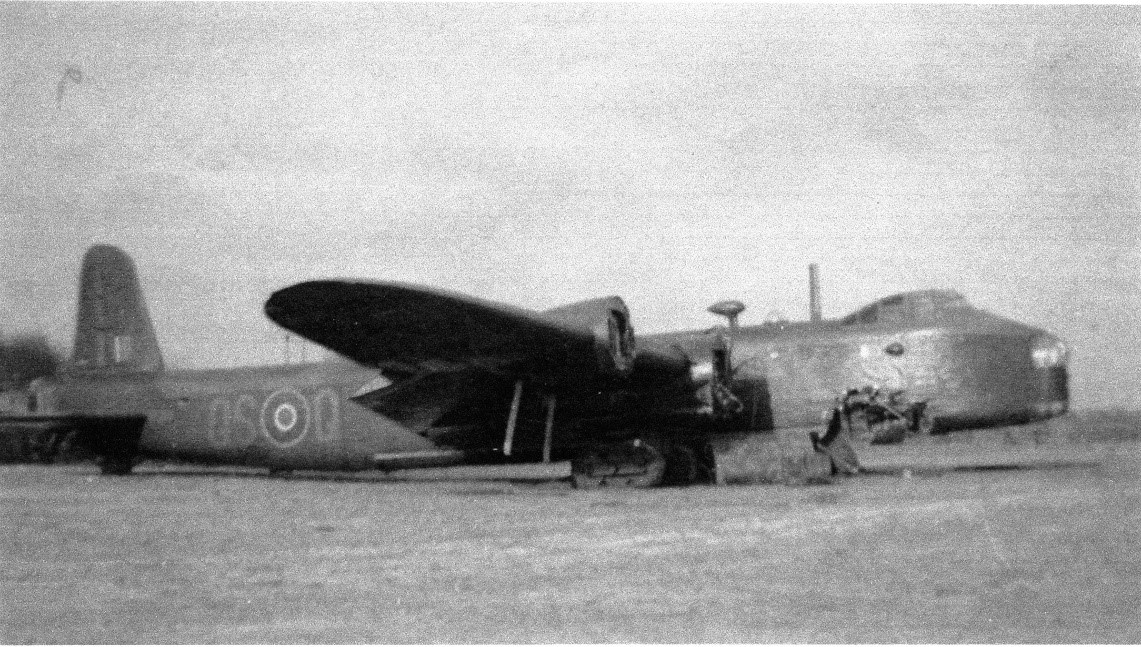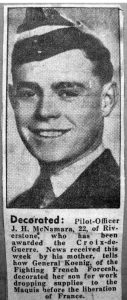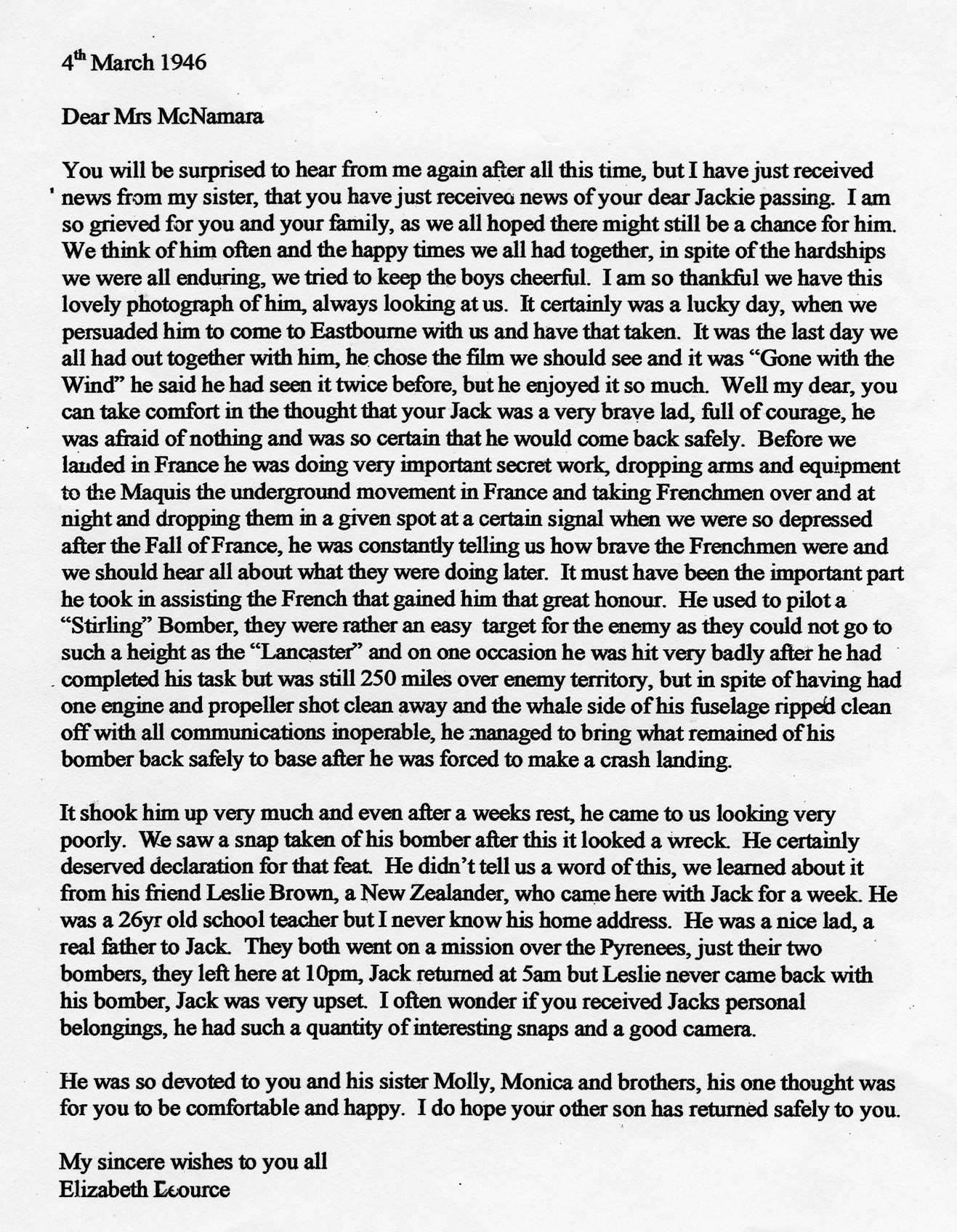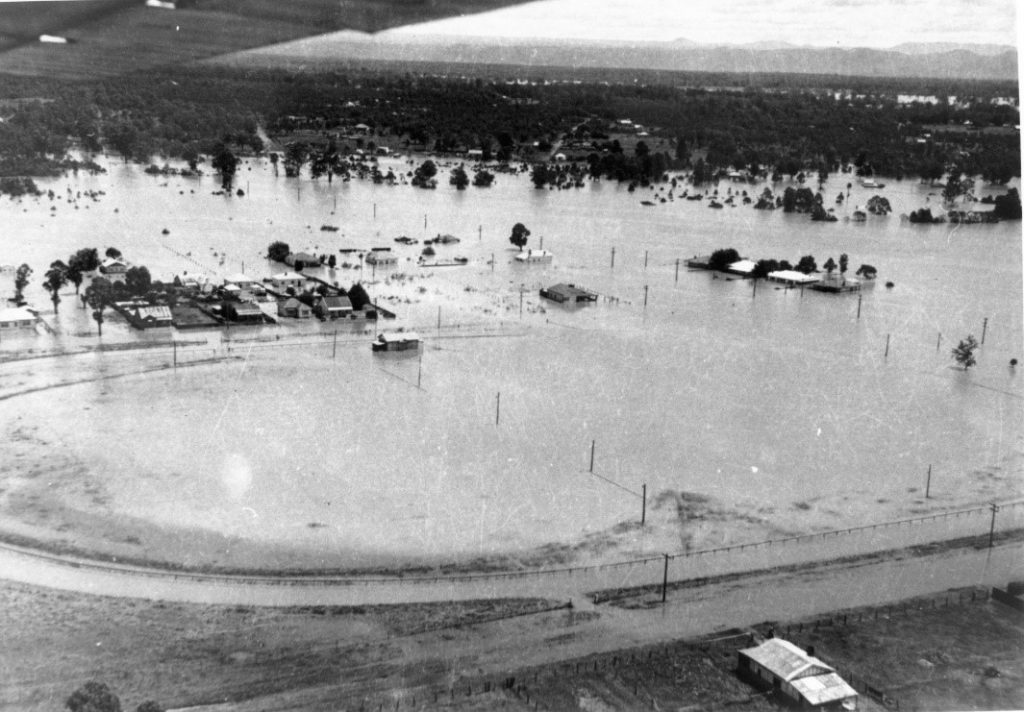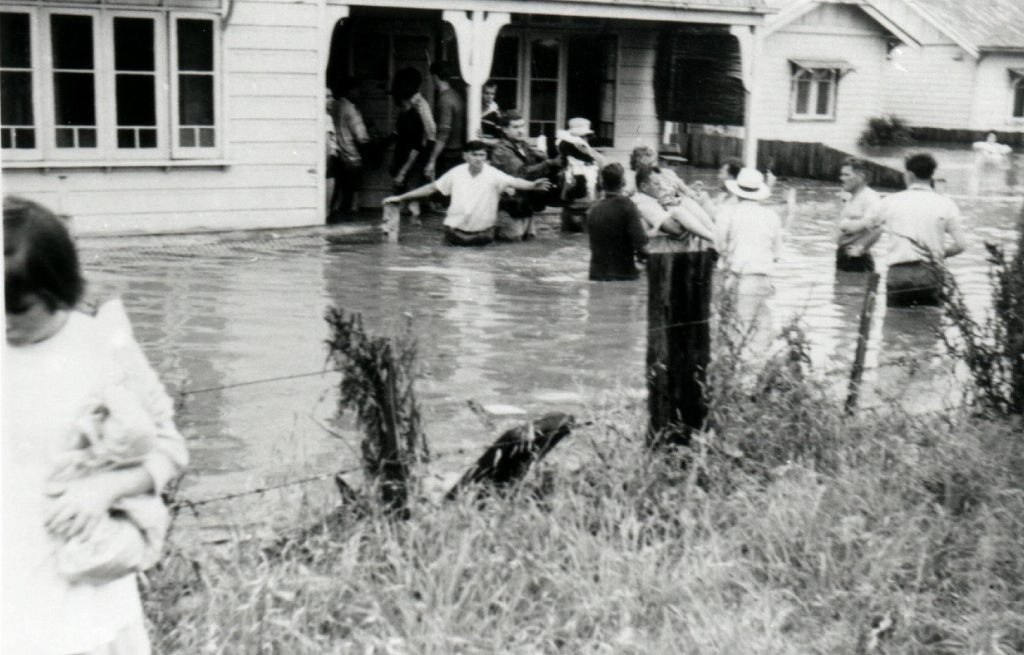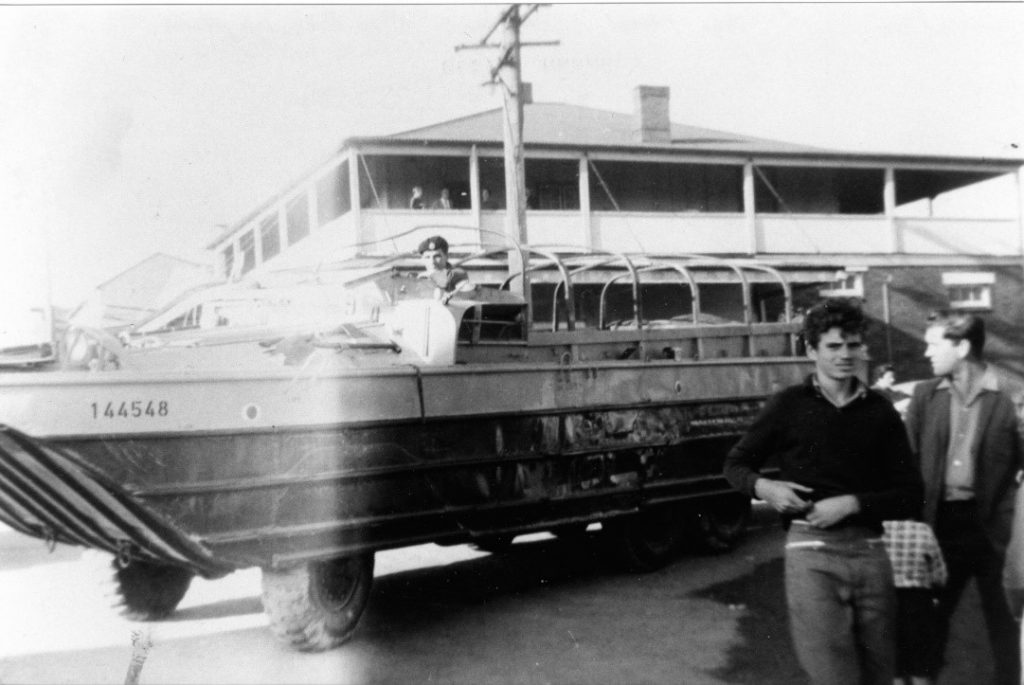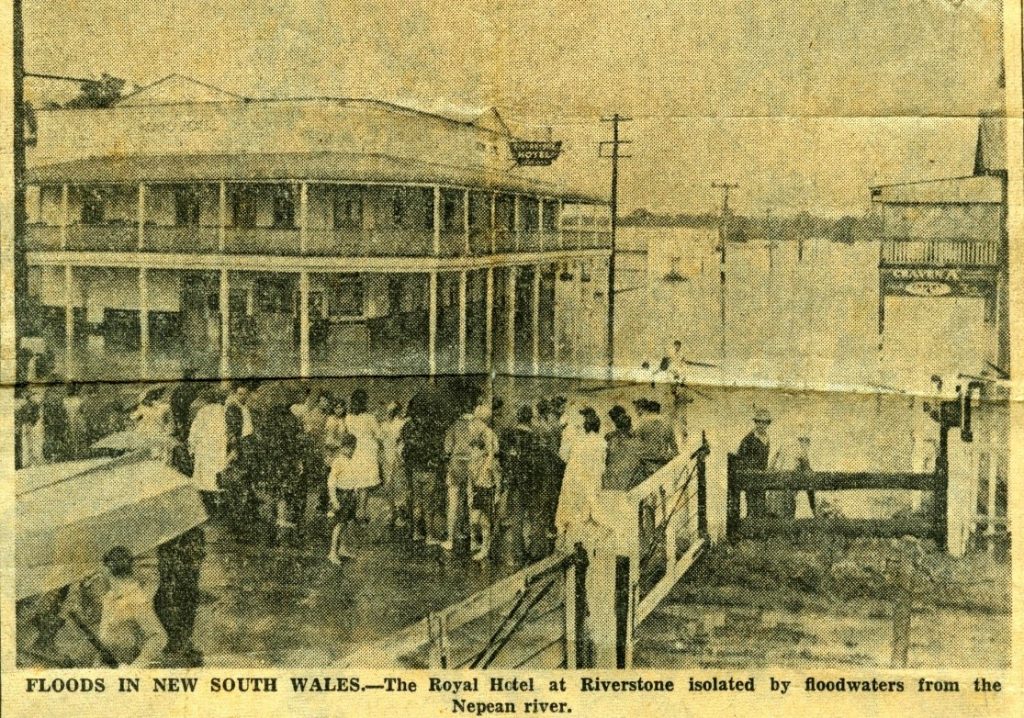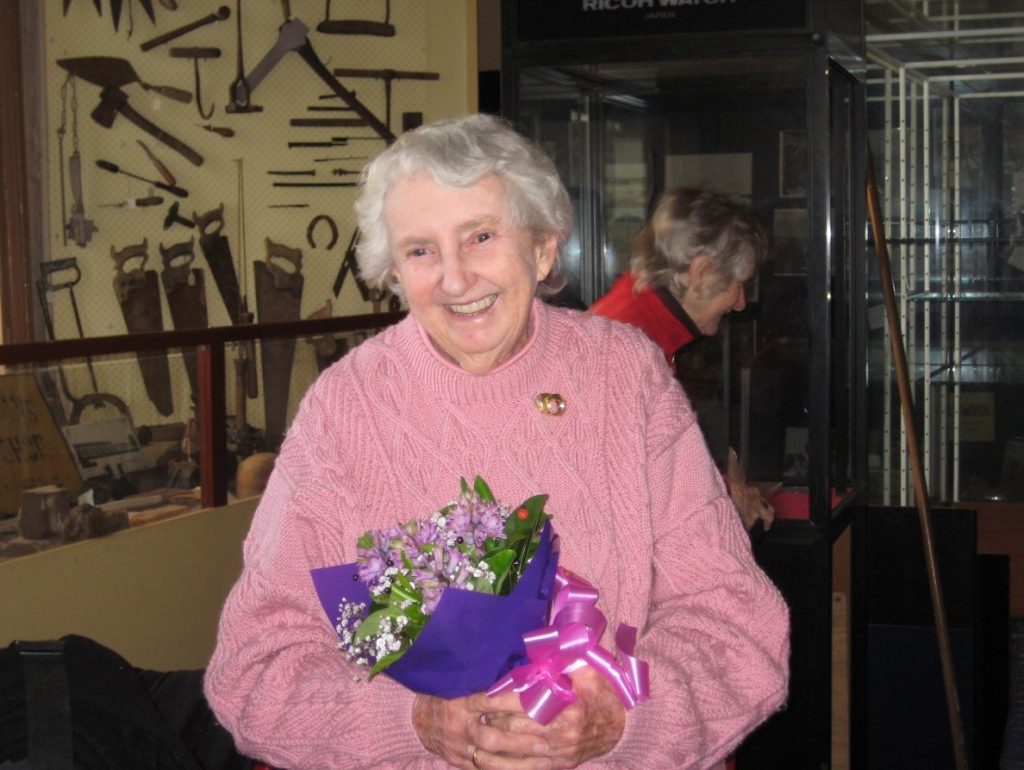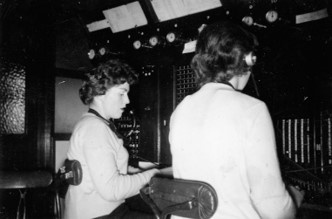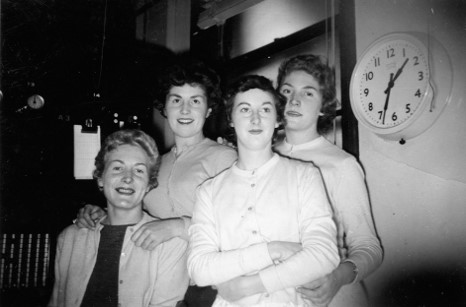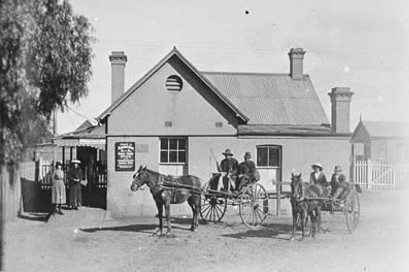Alan Strachan and Clarrie Neal
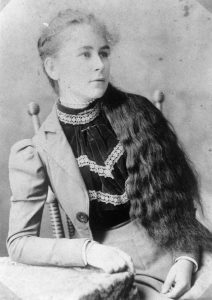
Elsie Wiggins was a leading light in the Riverstone community in the early 1900s. A gifted singer and musician, she travelled Australia and the world before returning to Riverstone to establish the Olympia Theatre, which was to provide entertainment for the town for many years. Elsie and her experiences caught the attention of two of our Society members who independently wrote articles on her life. We have combined the two articles for your enjoyment.
Elsie May Wiggins was born at Riverstone in 1882. As Elsie progressed through her schooling, she became professional in music and singing. As a teenager Elsie loved to organise concerts and socials for the various community groups and benefits for families in need. She held many concerts for the Riverstone Brass Band and on the 7th September, 1901 the Windsor and Richmond Gazette noted the introduction of the Riverstone String Band, a group formed by Elsie.
The various groups were quick to respond to her efforts and she was often presented with gifts of appreciation. In 1901, when she would only have been 19, the community of Riverstone presented Elsie with an Illuminated Address and a gold watch and chain, a wonderful gift in that era. The Gazette report on the 9th March noted – …. For all the worry and work this talented young lady has done since her school days, in the cause of charity, she would never accept fee nor reward.
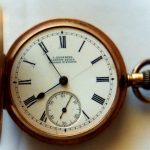
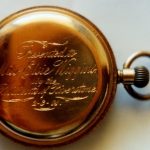
The Illuminated Address read –
Dear Miss Wiggins,
“We the undersigned, on behalf of the residents of Riverstone and District who have so frequently experienced your kindness and generosity in the organising and conducting of charitable concerts, desire to express our recognition of your kindly disposition and musical abilities. As a small token of our esteem and regard we present you with the accompanying gold watch and chain and beg to assure you that your welfare will always be an object of solicitude to us and that you may enjoy many years of health and happiness is the fervent wish of yours sincerely.
A. W. Studdy, J. Cragg, M. W. Grigor,
Committee: I. McCarthy, E. Cragg, E. C. Bray, E. Leury, E Morrison,
L. A. McCarthy, M.Johnston, V. A. Vidler, E. McCutcheon
Elsie continued her community work and in 1904 was presented with a gold bracelet, the presentation taking place from the balcony of the Royal Hotel, Riverstone.
In her early twenties Elsie broadened her horizons beyond Riverstone to the rest of the world. Her travels were reported in the local Gazette and would have been of great interest to the locals, some of whom would never have travelled outside of the town. In 1908 the Gazette stated that Elsie Wiggins was performing under the stage name of Grace Elton. She toured with various theatrical groups such as Harry Clays Vaudeville, Rickards Troupe and Fred Elton.
In 1906 the Gazette reported that Elsie visited the Philippines, in 1909 it was New Zealand, in 1914 it was Egypt and in 1915 she returned home from a World Tour. All of this travel would have been by sea as air travel had yet to commence.
Elsie’s nephew, Len Parry remembers her as a top dancer, playing the xylophone and novelty instruments such as the cow bells, and could play a tune using a tuning bar on a row of bottles filled with varying levels of water.
It appears the Wiggins family regularly used Post Cards to keep in touch. Several family photos were reproduced on Post Cards. Len Parry remembered their grandfather George as a keen photographer.
A book on the history of communication called Before the Phone contains a reproduction of a post card from Elsie, sent to her father in Riverstone –
Dear Dad,
I am enjoying myself and singing well. Will send you some papers. We have not got your Post Card yet. I have a bosker curly wig and a brown hard hitter hat and gold walking stick for my swag and finish with a dance. I am waiting for your PC and answer via Sydney. This one to Cairns Queensland. You must come to meet us. XXXXXX
With love, Little Titch
Elsie returned to Riverstone between tours. The Gazette of 15th August 1908 reported – Miss Elsie Wiggins, the well known musician… who has just finished 16 weeks with H. Rickards’, [Troupe] is giving a variety comedy entertainment in the Oddfellows Hall on Saturday, 22nd… We can only say that any who misses this show will miss a treat in art, music, mirth, melody and merriment…
From about 1909, the Temperance Hall next to the Riverstone Police Station was used to screen motion pictures. (Before that the hall had been used for screening of films, lantern slide evenings.)
The hall seated approximately 150 people. It was constructed of weatherboard with a corrugated iron roof. The walls and ceiling were not lined, and there was a brick supper room attached at one side.
In 1912 Elsie organised the showing of silent movies by the Elton Picture Company in the Hall. It was very much a family affair with Elsie playing the piano and her brothers Alfred, Albert and Bill assisting at various times to hand crank the projector. On the day of the show one of the brothers would walk the streets and using a bell to attract attention, shouting “Pictures Tonight”.
Elsie continued to travel overseas during the First World War. The Gazette of 29th October 1915:-
Miss Elsie Wiggins who recently returned by the H.M.S. Osterley has travelled over a considerable portion of the world since she left Riverstone a couple of years ago.
She had rather an exciting voyage from England. In the English Channel the Osterley just missed a mine which was floating 100 yards from the boat. The Osterley was held up for 20 hours and was successful in blowing up the mine. The report from the mine was terrific and shook the boat from end to end. The Osterley carried a gun as far as Gibraltar. For the first fortnight things were very slow on board on account of having to travel at night in total darkness as far as Port Said.
Miss Wiggins travelled through England, France, Italy and Switzerland. She was thrown out of her bed in the last earthquake in Northern Luccany (Firenze). She went through the greater part of Egypt, visiting many places where Australian soldiers have been. She met many wounded Melbourne soldiers in Italy, where she visited the beautiful old galleries….
…She has been over every inch of Australia, from the West to Normanton, round the Gulf of Carpentaria (Qld), three time all over New Zealand, over Fiji and New Guinea, and is still anxious to travel more. While in Riverstone, Miss Wiggins is playing at the Elect Pictures every Saturday night and is accompanied on the violin by Miss Elvie Rothsay of Sydney.
In 1916 she bought a block of land in Garfield Road Riverstone where it was planned to build a theatre. Later that year the Gazette reported she was touring Queensland with her sister Mrs Parry, giving performances in Brisbane and Toowoomba.
Elsie must have had success in her career as in 1916 she had a house constructed on the block of land in Mill Street. The Gazette of 4th February, reported, The weatherboard cottage which is being erected in Mill Street by Mr. John Anderson for Miss Wiggins, will further improve the appearance of the street. When finished we understand it will be occupied by Mr and Mrs Bert Parry.
The Gazette Friday 5th May 1916 recorded the death of one of her fellow performers- Many Riverstone people will be sorry to hear of the death of Mr. Fred Elton, the well known comedian, which took place in Allasio on the 24th February last. The remains were cremated in Genoa (Italy). Mr Elton and Miss Elsie Wiggins practically toured the world as theatricals, and were travelling round for ten years.
Enter Mr. Robert Lindsay Harper, who was born at Newcastle upon Tyne, England in 1884. In later years, he entered the world of entertainment and became a professional singer. He travelled around the world in the early 1900s and before performing on the stages in halls in Brisbane.
During the First World War Mr. R. L. Harper join the A. I. F. and served in Europe. Robert returned to Brisbane, Australia on Monday 14th July, 1919, at that time he was aged 33 years.
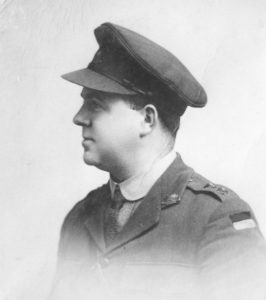
It was through his profession that he had met up with Miss Elsie May Wiggins, whilst performing in Queensland and Sydney. On Tuesday 19th August 1919 they were married at Riverstone. Their wedding scored quite a write up in the Friday Gazette on 29th August, 1919 and reads as follows:-
At St. Paul’s Church, Riverstone, on the 19th instant, a military wedding was celebrated, when Miss Elsie May Wiggins, eldest daughter of Mr and Mrs Geo. [George] Wiggins of Riverstone, was married to Lieutenant Robert Lindsay Harper, 9TH Battalion, A. I. F. The bride, who was given away by her father, was attired in a gown of bridal satin and georgette bodice, beautifully trimmed with pearl and beaded embroidery and beaded tassels. The square court train of satin was lined with pale pink crepe-de-chine, and trimmed with dainty scroll and hanging roses of pink and white. An embroidered tulle veil which was worn over the face, finished with sprays of orange blossoms, completed the bride’s charming toilette, and she carried a shower bouquet of sweet peas and fern, and wore a gold pendant, the gift of the bridegroom…
In the meantime “The Temperance Hall” better known as “Elect [Electric] Picture Palace” continued to be used for screening motion pictures by both Mr Robert and Mrs Elsie Harper. The hall was used extensively for the farewells and welcoming home of local Soldiers.
Towards the end of 1919, Mr Robert Harper and his wife, Elsie toured New Zealand for six months, providing entertainment and performing on stage for the general public. Prior to leaving Australia, they had made arrangements for the erection of a new modern picture theatre at Riverstone. Elsie had seen the need for a new picture theatre and a larger hall as early as 1916 when she purchased the block of land in Windsor Road [Garfield Road] Riverstone.
The Harpers had big plans for Riverstone and the Gazette of 30th July 1920 reported –
NEW THEATRE FOR RIVERSTONE
It will be pleasing to the residents of Riverstone and district to learn that we are to be favoured by the erection in our midst of an up-to-date theatre. We learn that Mr and Mrs Harper a little while ago received the plans of the proposed theatre from Mr. F. H. Faircloth (architect), who has had considerable experience in this class of work…The new theatre will undoubtedly be a big asset to Riverstone and will fill one at least of the vacant allotments, and materially improve the main street, Windsor Road. The erection of the theatre is in the hands of Mr. J. Donaldson of Harris Park, Parramatta.
At last, the dreams and visions of the then Miss Elsie May Wiggins [now Harper] were fast becoming a reality. Records show that on Thursday 19th August, 1920 – the land title of the block of land in Windsor Road [Garfield Road], Riverstone had been transferred into the name of Robert Lindsay Harper – from Miss Elsie May Wiggins.
In the meantime, silent moving pictures were still being shown within the old “Temperance Hall” under “Elect Pictures” which had been “Elton’s Elect Picture Palace” [Elect was short for “Electric”]. Mr. Robert Harper had purchased a new engine for the running of the pictures in 1920. Large crowds were still attending the silent pictures, so much so that, extra seating had to be provided.
The following article appeared in the Gazette on Friday 19th November, 1920 – Through the courtesy of Mr. R. L. Harper, the enterprising manager of the new Olympia Picture Theatre, a Gazette reporter had an opportunity on Wednesday [17th November] of inspecting the up-to-date building that is now nearing completion in Riverstone. The theatre is a credit to Riverstone and shows commendable enterprise on the part of the proprietors [Robert & Elsie Harper]. Indeed, it is considered to be one of the best country theatres in the State.
The Olympia theatre was opened in November, 1920, to play the silent movies. A family trio of musicians – Elsie (piano), Mrs. Eileen Parry (nee Wiggins) (violin) and Bert Wiggins (trumpet) provided the music. The Gazette noted that Robert Harper often played the violin in January 1922 reported:- the orchestral music is always a bright feature and is much enjoyed by patrons.
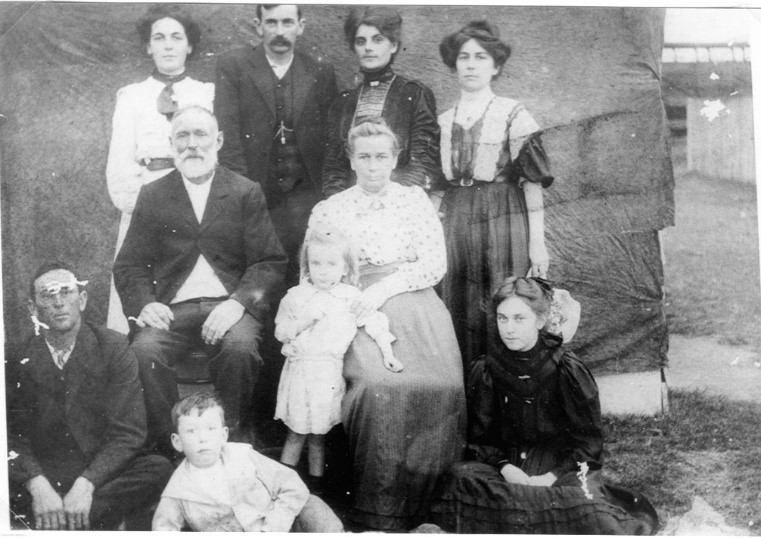
Back: Kate (Bill’s wife); Alfred, his wife Lilian; and Elsie.
Centre: George, Norman and Martha.
Front: Bill, Albert & Eileen.
Photo taken in Butchers Row.
Photo courtesy: Fred Wiggins.
Selling tickets at various times were Mr. Bert Parry and Miss Hooper. In the projection box, for different periods of time, were Tommy Gough, George Wiggins and Bede Donoghue.
Gazette Friday 26th November, 1920 – The opening night of the new Olympia Picture Theatre was marked with great success on Saturday last [20th November].
Gazette, Friday 3rd December 1920 – The grand ball at the Olympia Pictures last Friday [26th November] night proved a huge success, the new floor being most satisfactory to all the dancers, whose praise of the music provided was unanimous… The orchestra was composed of Mr. Leadbeater..; Mr. Barbecci (Clarinet) is a noted Italian instrumentalist in Australasia; Mr. Smith (violinist) a well known leader of Sydney Hall music. Mrs R. L. Harper (nee Miss Elsie Wiggins) was at the piano and as we all know her exceptional musical ability as an all round pianist, it needs no eulogistic comment. The dancing was kept up to the early hours of the morning… “It is no idle boast to affirm that we have one of the finest halls outside of Sydney in the Olympia Theatre.
Elsie became seriously ill in 1921 and the Gazette of 4th Feb 1921 described how she was conveyed to Sydney by train for treatment –
Mrs. R L Harper had been under medical care for many months past and the dangerous stages which have at times eventuated have brought forth many sentiments of sympathy for her prolonged suffering. Last week a serious relapse occurred and Dr. Johnson ordered her immediate entrance to a Sydney hospital.
She left Riverstone in a low state, but thanks to the care exercised by the driver and fireman of the train when stopping and starting from stations, the journey was accomplished without any serious effects. An operation was performed and the doctors are in every way satisfied with the result of the operation.
The following extract appeared in the Gazette on Friday 5th August, 1921 – Serious misgivings were expressed by a number of residents when the popular manager of the Olympia Theatre undertook the costly erection and furnishing of that building, it being held that it would not be a profitable investment. However, Mr. Harper held otherwise, and his enterprise and faith in the town have been unmistakeably proved. Not only are the bi-weekly screenings well patronised, but also the theatre is being much availed of as a centre and meeting place for the following:- The Meat Industry Employees’ Union, the Riverstone Labor League, the District Progress Association, the Poultry Farmers’ Society, and now other local institutions have similar intentions, among them being the Manchester Order of Oddfellows.
The following article in the Gazette on Friday 2nd September 1921 reported on another improvement in the town as a result of the Harper family endeavours:- We understand that owning to the activities of Mr. R. L. Harper, manager of the Olympia Theatre, in regard to securing the co-operation of local business houses, the local council will be undertaking the kerbing and asphalting of the non-completed portions between Mr. Cohen’s Store and Mr. H. Saundercock’s Auction Rooms.
Mr Harper’s initiative in the introduction of “Moonlight” pictures on Monday nights was well received by his patrons. Gazette, 11th November, 1921 – Mr. Harper is showing commendable enterprise in catering for his local patrons on Moonlight Mondays – especially with First National Productions which include the world’s greatest modern “stars”. The splendid ventilation of the Olympia is a rare asset during the summer.
Besides being kept busy with his Olympia Theatre, Mr Harper continued on with his professional singing. Gazette, 7th April, 1922 – Our townsman Mr. R. L. Harper, Director of the Olympia Picture Theatre will sing in the tenor solo in Rossini’s “Stabat Mater” and Elgar’s “Triology” in Sydney Town Hall on Saturday (8th April) with the choral society. Elsie’s niece Jean Alcorn (nee Parry) has fond memories of Robert singing the Little Kookaburra song to her when she was a child.
Opposition to the Olympia raised its head in the shape of a second picture theatre in Riverstone, when the Royal Pictures commenced screenings at the Oddfellows’ Hall in Railway [now Riverstone] Parade on Saturday, 4th August 1923. The first film to be screened was Charlie Chaplin inimitable in “The Kid”.
The Gazette of 10th August 1923 reported on the opening– The attendance at the opening night, last Saturday [4th August], of the Royal Picture Theatre was estimated at between 600 and 700. The patrons speak highly of the programme presented, and it is the objective of the management to yet effect many improvements. With the second lot of films screened at the Royal Picture Theatre, Mr. Murrell introduced a Matinee screening to Riverstone district – another successful idea.
Success ensued at the Royal Theatre – so much so that, in February 1926, Mr. R. K. Murrell bought out the Olympia Theatre from the Harpers, who had operated the Theatre for six years. The Harpers then moved to Sydney where according to the Gazette of 19th February, 1926 –Mr. Harper has commenced practice as a professional vocalist. Already Mr. Harper has accepted a number of early operatic and concert engagements, and also established a studio at Advar House.
In later years, Elsie and Robert Harper went their separate ways, with Elsie returning to Riverstone, and Robert remaining in Sydney. Records show that through solicitors, Mrs Elsie Harper, instituted legal proceedings against Robert Lindsay Harper on the 9th June, 1955. The inquiry through the authorities, proved to be fruitless, and Mr Robert Lindsay Harper, the professional singer of renown, was never located. Although his whereabouts were not established, it was believed however that he had returned to England. Nothing was heard of Robert Harper ever again.
Elsie continued to reside in Riverstone and sadly, she passed away on the 1st March 1960 – aged 78. Her Obituary appeared in the Gazette on Wednesday 16th March, 1960 under the heading:- MRS ELSIE HARPER – and read as follows:- A wide circle of district friends learned with deep regret of the death on March 1, of a popular Riverstone resident in Mrs Elsie May Harper. A member of the well known Wiggins Family, she is survived by brothers Bill, Os., Bert and Norman and sister Eileen (Mrs B. Parry) to whom sympathy is offered in their bereavement. After a service in St. Matthew’s Church of England at Windsor, the funeral moved to the Rookwood Crematorium.
There was no mention of the fascinating and interesting life that Elsie had led, where she had been an entertainer and provided along with other members of the Wiggins Family, entertainment in the form of showing pictures in both “Lantern” Slides and Moving Pictures in the Riverstone District, and most importantly, her dreams and insight of building a modern Picture Theatre in Riverstone. Elsie had provided entertainment in singing and piano playing, sometimes dancing and moving pictures for well over 27 years [1899-1926] and had started her career at the age of 17 years in 1899.
Just how far reaching her career went is not really known. One interesting story handed down through the Wiggins family revolves around a kookaburra brooch in her possession. The family believes it to be a memento of appreciation from the parents of Peter Dawson, the famous baritone singer who was tutored by Elsie early in his career.
Information from Jean Parry, Len Parry and Fred and Marcia Wiggins.

